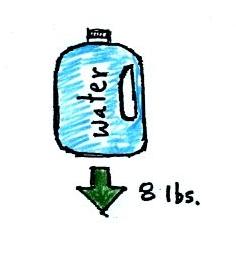



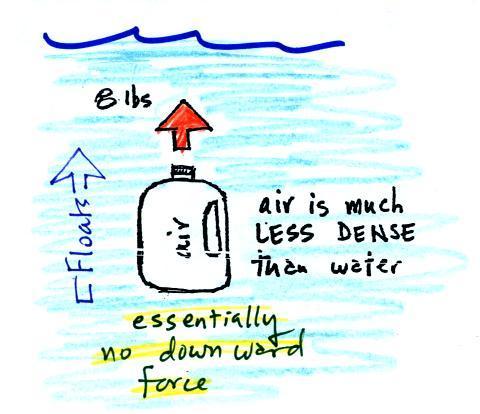 |
 |
| We've poured out the water and filled the 1 gallon jug with air. Air is much less dense than water; compared to water, the jug will weigh practically nothing. But it still displaces a gallon of water and experiences the 8 lb. upward buoyant force. The bottle of air would rise (actually it shoots up to the top of the pool). | The density of the material inside and outside the bottle are the same. A bottle filled with water is weightless. |
 |
 |
| Sand is about 50% denser than water. The weight of a gallon of sand is more than a gallon of water. The downward force is greater than the upward force and the bottle of sand sinks. |
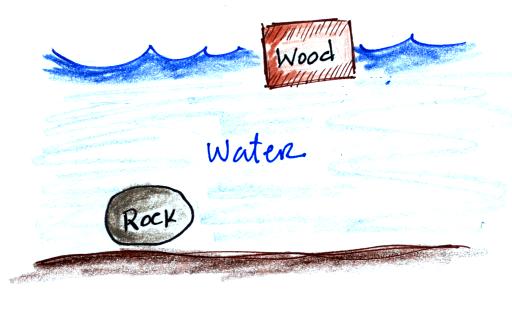

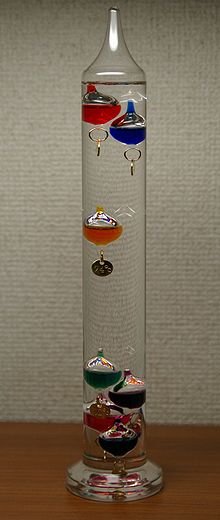 |
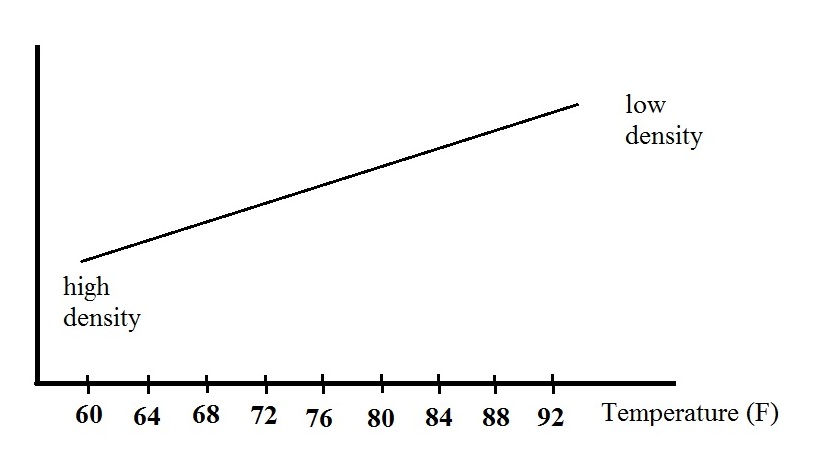

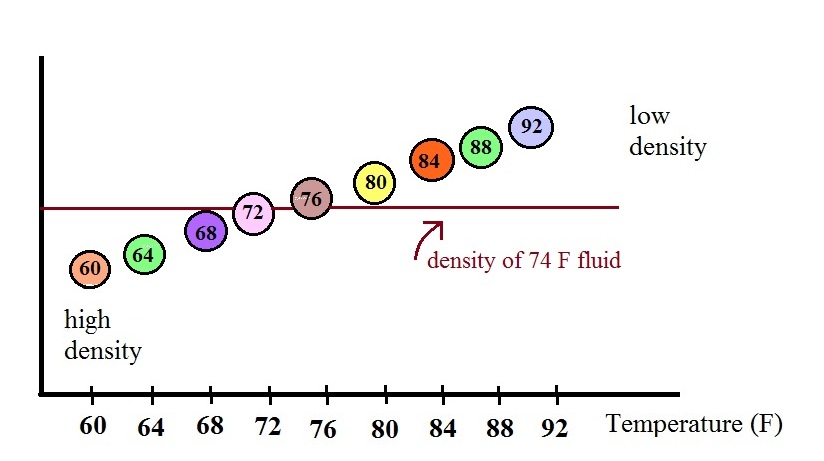 |
 |